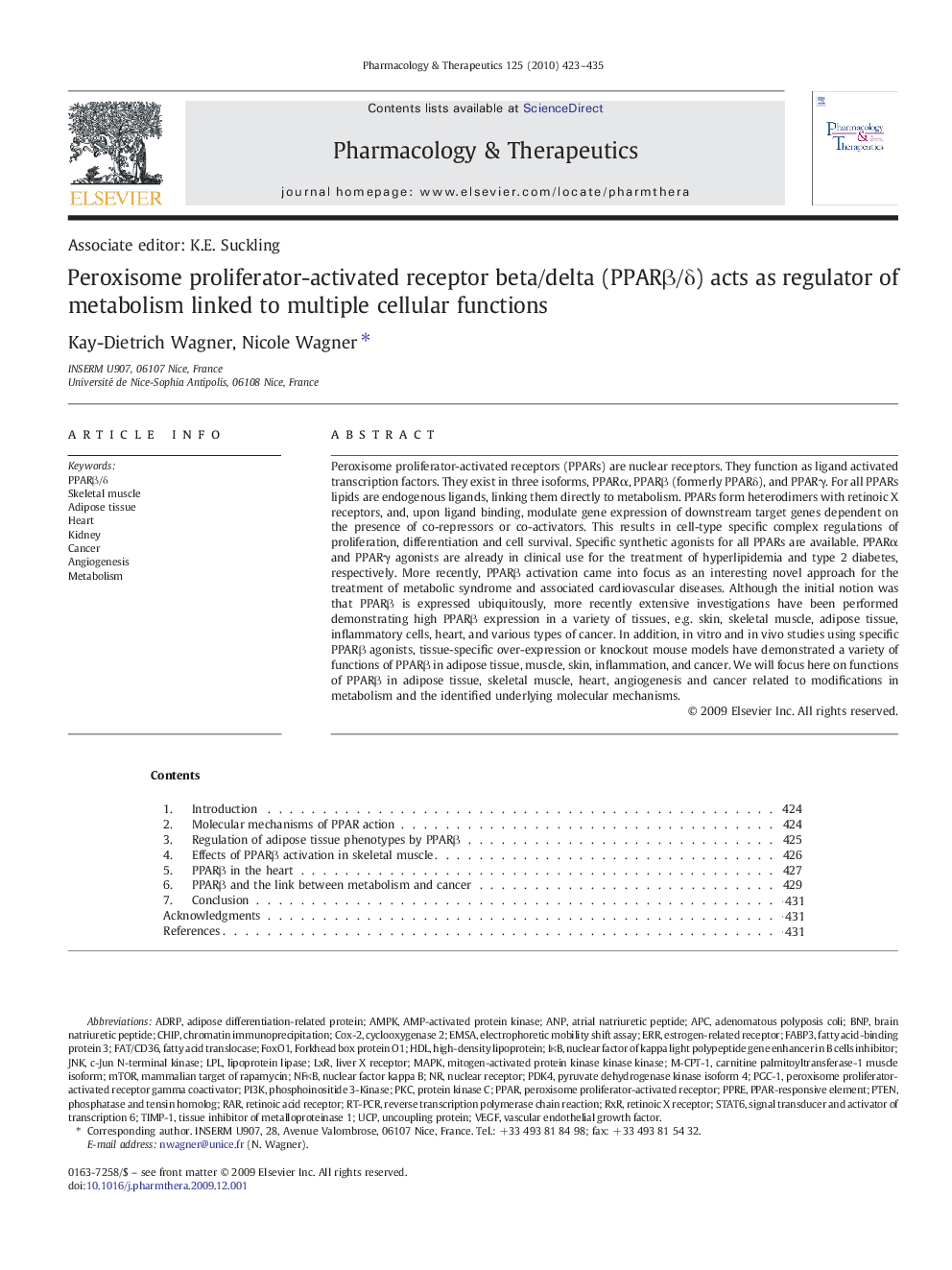| Article ID | Journal | Published Year | Pages | File Type |
|---|---|---|---|---|
| 2563404 | Pharmacology & Therapeutics | 2010 | 13 Pages |
Peroxisome proliferator-activated receptors (PPARs) are nuclear receptors. They function as ligand activated transcription factors. They exist in three isoforms, PPARα, PPARβ (formerly PPARδ), and PPARγ. For all PPARs lipids are endogenous ligands, linking them directly to metabolism. PPARs form heterodimers with retinoic X receptors, and, upon ligand binding, modulate gene expression of downstream target genes dependent on the presence of co-repressors or co-activators. This results in cell-type specific complex regulations of proliferation, differentiation and cell survival. Specific synthetic agonists for all PPARs are available. PPARα and PPARγ agonists are already in clinical use for the treatment of hyperlipidemia and type 2 diabetes, respectively. More recently, PPARβ activation came into focus as an interesting novel approach for the treatment of metabolic syndrome and associated cardiovascular diseases. Although the initial notion was that PPARβ is expressed ubiquitously, more recently extensive investigations have been performed demonstrating high PPARβ expression in a variety of tissues, e.g. skin, skeletal muscle, adipose tissue, inflammatory cells, heart, and various types of cancer. In addition, in vitro and in vivo studies using specific PPARβ agonists, tissue-specific over-expression or knockout mouse models have demonstrated a variety of functions of PPARβ in adipose tissue, muscle, skin, inflammation, and cancer. We will focus here on functions of PPARβ in adipose tissue, skeletal muscle, heart, angiogenesis and cancer related to modifications in metabolism and the identified underlying molecular mechanisms.
